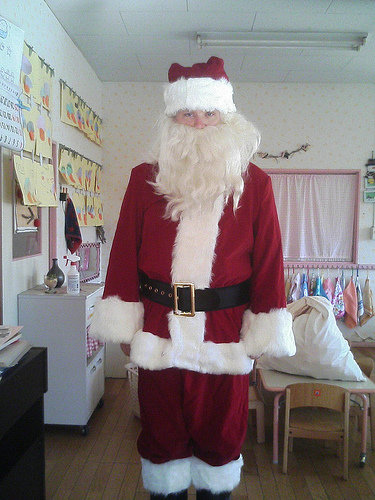Japan is a very rail-centric place compared to the U.S., and trains are a much larger part of society than they are back home, at least from the point of view of this California yank. Trains are more convenient the closer you live to a large city, of course, and you can get anywhere in Tokyo in a short time thanks to its complex network of rail and subway lines. Trains are nice to have when you’re out drinking with friends, since you can all get home safely without worrying about driving. Out in the “inaka” (ee-NAH-KAH, i.e. the boonies) where we live, trains are only used to get from one city to another, and are only convenient if you happen to be going somewhere near your target station. Still, even in small cities like ours, train stations play a large role in defining the commercial and cultural identity of a city. Nearby Takasaki is a commercial hub for our prefecture, and their station is gleaming white, with many shops located right inside the station for convenience. Our own home of Isesaki is famous for having the lowest “cultural level” of any city in the area, as defined by membership rates in groups like the Japan Rotarians and the Lion’s Club or something like that (it’s all quite over my head), and our run-down, ugly train station reflects our city’s mediocrity.
It’s funny how east mirrors west sometimes. Many people from Europe and the U.S. are taken with Japan, with the mystery of the place and the many ways it delights us by never being predictable. In a similar fashion, the Japanese have had a fascination with the West ever since Commodore Perry sailed his black ships into Yokohama Bay in 1853. You can see Japan’s tendency to look culturally to Europe when you look at iconic buildings like Tokyo Tower (an exact replica of the Eiffel Tower) and Tokyo Station (a recreation of the Amsterdam Centraal Station). Similarly, it’s interesting to see the way they define their own land in relation to the West, declaring the seaside in Chiba to be the Dover Cliffs of Japan, the main mountain range in the country the Japan Alps, and so on. If I want to get out and feel like I’ve travelled the world I can go to Kronenberg, a replica of a German village complete with beer, sausages and embarrassed-looking Germans standing around; visit Western Village, an old west town that features cowboys and a miniature version of Mt. Rushmore looking down on the freeway; or even go see the replica of the Statue of Liberty down by Rainbow Bridge in Tokyo (it’s quite a “date spot”). Comparing cultures is so much fun!

Christmas came a little early to the kids at a preschool near J-List as “Santa-san” dropped in for a visit this morning. It was really me in that suit (ssh, don’t tell the kids), fulfilling my annual role as the cheerful St. Nick as I handed out presents to everyone. Christmas is a very bright and happy time in Japan, and no Christmas Party would be complete without a real live gaijin Santa Claus there to make everyone laugh. There was a question and answer time, where the kids asked me such questions as, “Where do you live?” (er, Norway), “What is your favorite color?” (red) and “What is your favorite food?” (“reindeer hamburg steak”). As usual, I made sure not to break character by speaking Japanese, and it was great to see them using the universal English phrases “Thank you,” “How are you?” and “What is your hobby?” with me, so happy to be actually using English for communication.
We’re still rolling out the new features to the J-List website. The (still beta) J-List Wish List is shaping up nicely, and we’ve added the ability to move items in your shopping cart over to your Wish List for later purchase, so you won’t forget about it if you want it get it later. Wish Lists can be made public so you can tell friends or family what you’d like them to get for you, post it on your blog, or just show off your list of cool items for anyone who wanders in. One small warning though: many items at J-List are limited in stock, and if you leave an item in your wish list for too long, it might not be available next time you go to get it. Feedback on the new system














